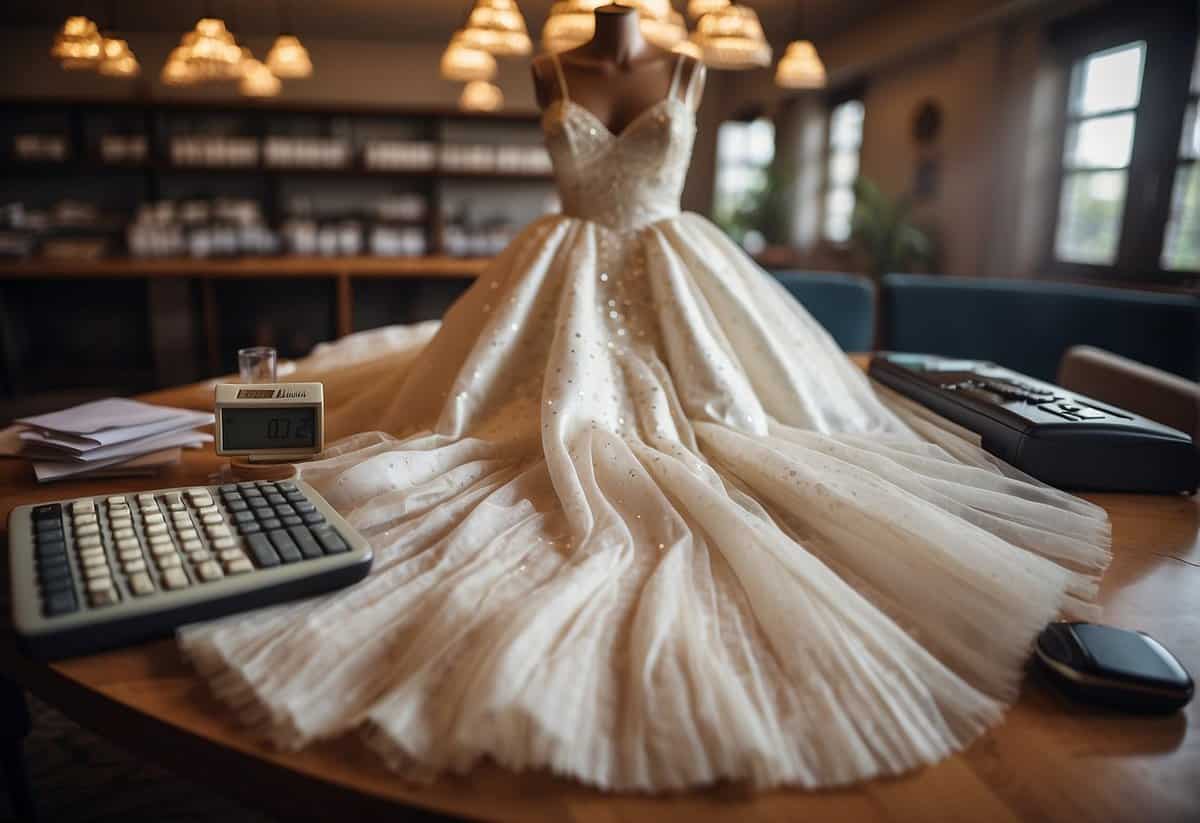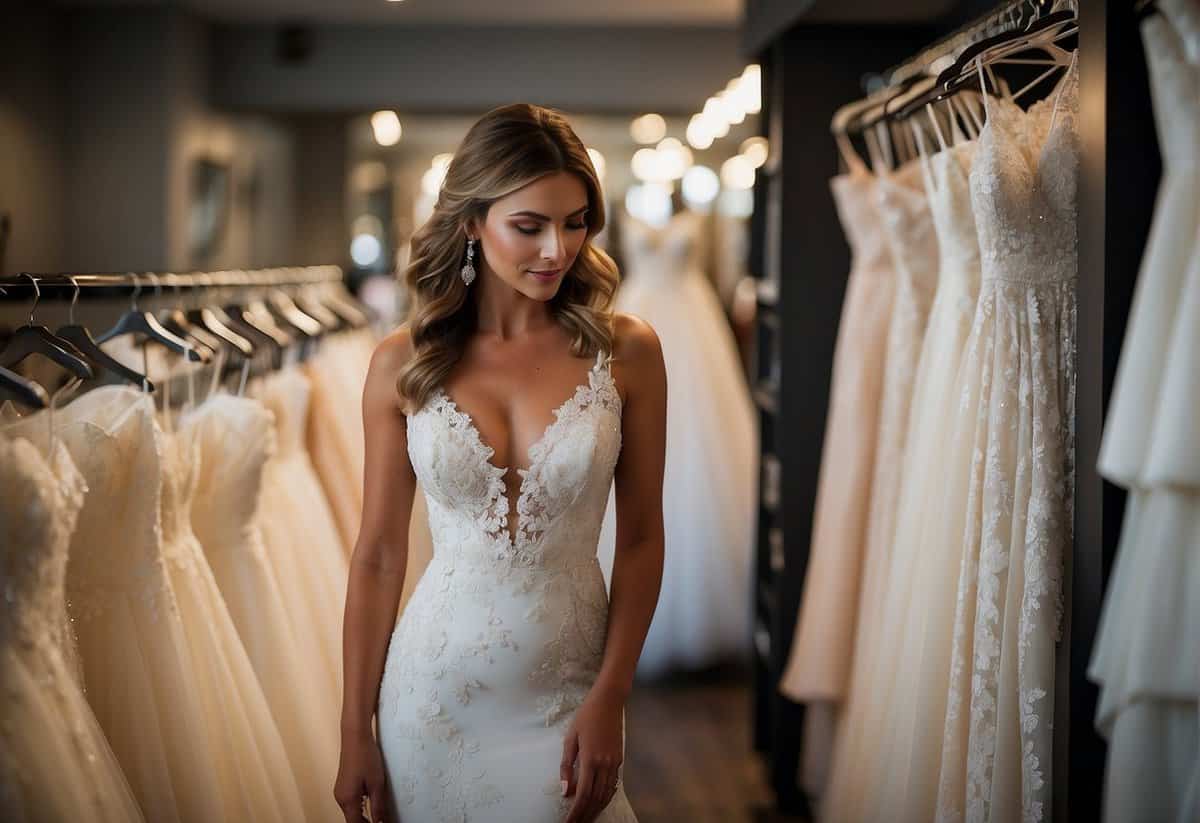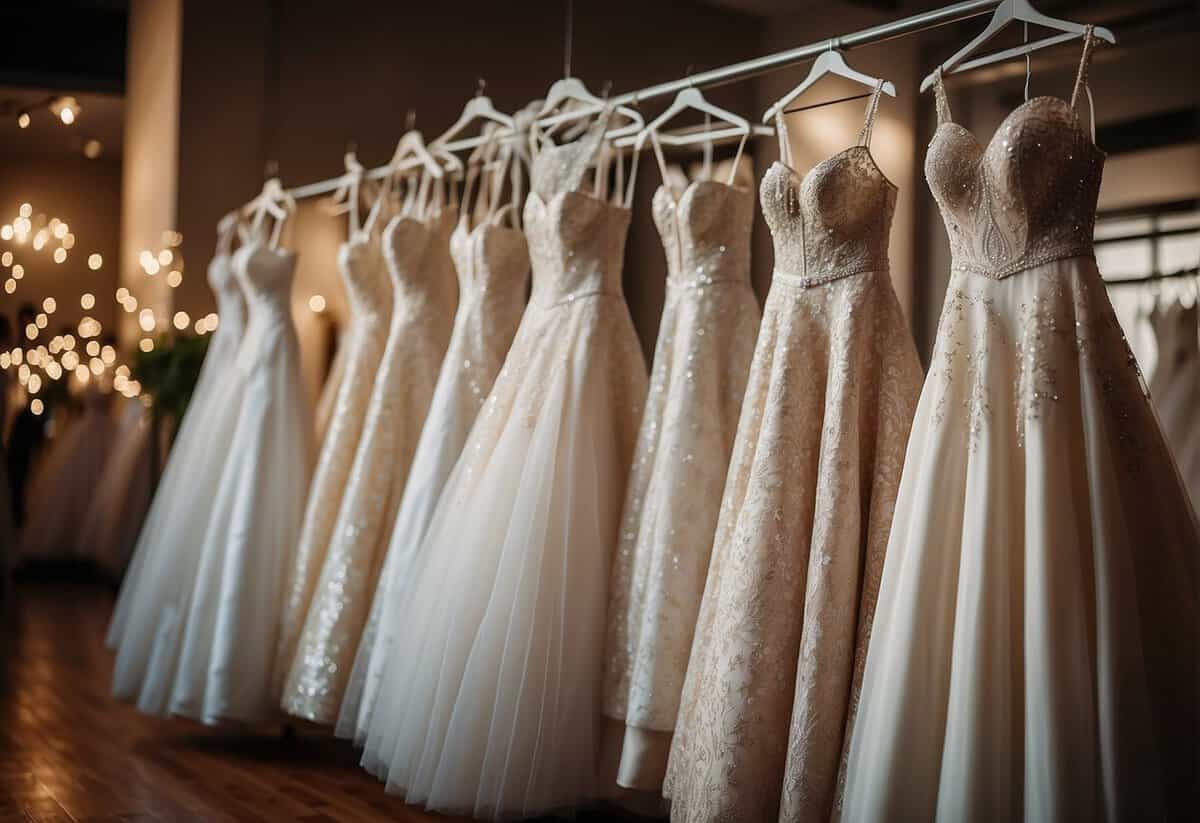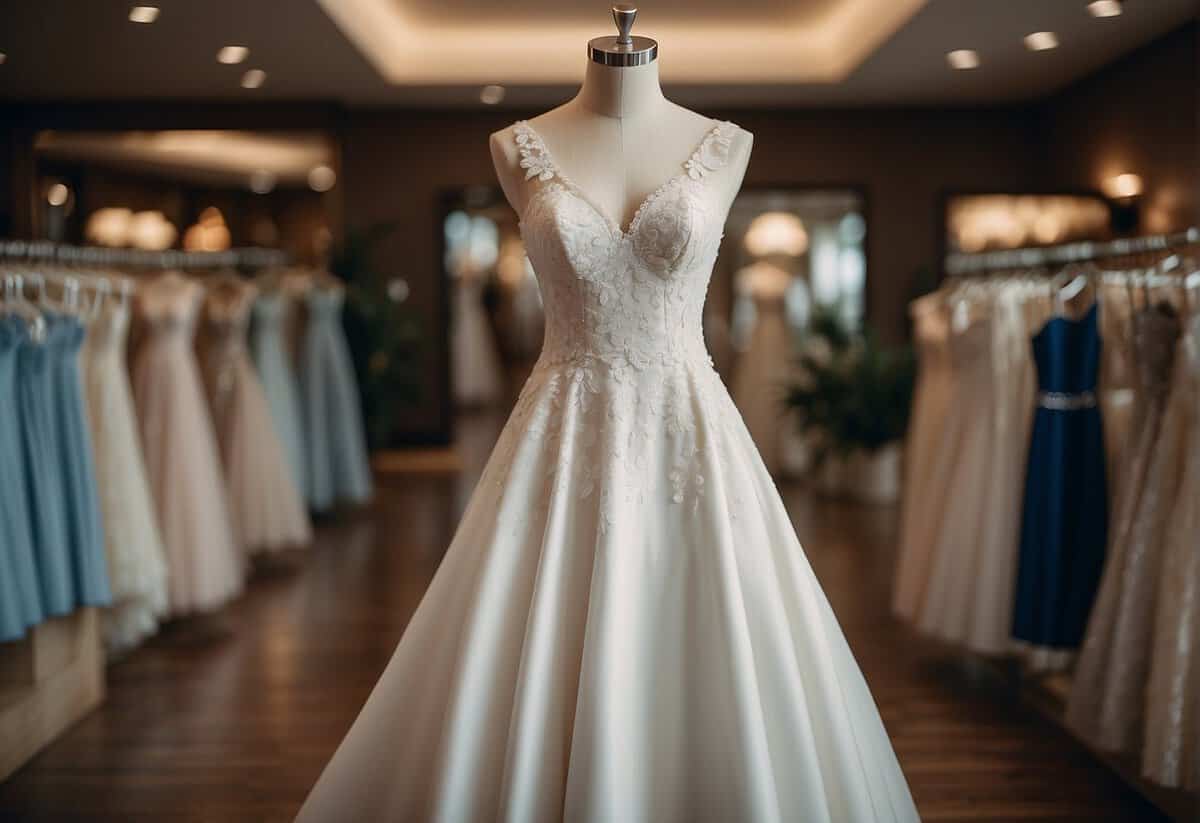How Much Do Wedding Dresses Cost on Average? Unveiling the Price Tag
When planning your special day, the wedding dress plays a pivotal role in setting the theme and tone of your wedding. Understanding the cost of a wedding dress is essential for efficient budgeting and planning. Prices vary significantly depending on factors such as designer, materials, and the complexity of the design, but there is a range that most brides can expect. The average wedding dress cost can serve as a useful benchmark as you begin your search.

Regardless of the style you’re drawn to, the cost of a wedding dress is just one part of your overall wedding budget. Budgeting for your dress means accounting for alterations, accessories, and any cleaning or preservation after the wedding. To avoid surprises, consider these additional expenses as part of the dress budgeting process. Additionally, knowing some shopping tips can help you find the perfect dress that aligns with both your vision and budget.
Key Takeaways
- The average cost informs your wedding dress budget.
- Additional expenses can influence the total cost.
- Shopping tips help in making budget-friendly choices.
Understanding Wedding Dress Costs

When you begin your journey toward finding the perfect wedding gown, understanding the various factors that influence the cost and the price ranges can help you set a realistic wedding dress budget. Let’s look at what affects prices and what you can expect to spend.
Factors Affecting Wedding Dress Prices
Several elements play a part in determining the cost of a wedding dress. The design is paramount; trending styles or gowns from high-profile designers, like Vera Wang or Monique Lhullier, often come with a hefty price tag due to their coveted status. The era or the style of the dress can also significantly impact pricing, particularly if you’re looking for a vintage piece.
The choice of materials makes a big difference as well. Options range from affordable polyester to the more lavish silk, satin, or charmeuse. Lace, a popular choice, comes in varieties such as beaded lace, hand-embroidered lace, or appliqués, each adding to the gown’s uniqueness and cost.
Additional embellishments like beading, rayon embroidery, or organza layers can also ratchet up the price. The complexity of these details often requires meticulous handwork, thus increasing labor costs.
Price Range and Average Costs
The price of wedding dresses can vary widely. At large retailers like David’s Bridal, you might find gowns starting around $500, while boutiques might offer their starting lineup a bit higher, around the $2,000 mark. Luxurious designer gowns or custom creations, such as those from the Berta or Luxe Collection, typically begin at $5,000 and can soar much higher.
According to The Knot, the average wedding dress cost has been fairly stable over the years, with a typical price point lying between $1,500 and $2,500. However, this can fluctuate based on personal style and the degree of customization involved.
When planning your wedding, it’s important to factor in these costs, especially since the gown plays a central role in your special day. The The Knot Real Weddings Study can provide more insight into average wedding costs, helping you allocate your overall budget more effectively.
Additional Expenses Beyond the Dress

When budgeting for your wedding dress, it’s easy to overlook the less obvious costs that can accumulate quickly. Be sure to consider the price of alterations, accessories, and preservation to avoid any surprises.
Alterations, Customizations, and Add-Ons
Your wedding dress may not fit perfectly off the rack, which is where dress alterations come in. Whether it’s tweaking the hem, taking in the waist, or adding a bustle, alterations can vary widely in cost, typically ranging from $100 to $500. For more intricate gowns adorned with pearls, crystals, or sequins, the cost can be higher due to the delicate work required.
Customizations add a personal touch to your gown, but they also add to the total cost. Adding embellishment or modifying the design are common customizations you might desire. Likewise, add-ons like a special veil, jewelry, and shoes are essential bridal accessories that can enhance your overall look but should be factored into your budget.
Preservation and Post-Wedding Costs
After your special day, you might consider wedding dress preservation to keep your gown in pristine condition. This typically involves professional dry cleaning and special packaging to protect against aging, which can cost between $200 and $500. Remember, the cost of cleaning depends on the complexity and delicacy of your dress’s fabric and details.
Budgeting for additional expenses ensures that these hidden costs won’t catch you off guard. Keep in mind, each accessory, customization, and preservation option contributes to the overarching memory of your day, so choose wisely based on your priorities and budget.
Shopping Tips and Tricks

When hunting for your dream wedding dress, it’s smart to navigate the shopping journey with an eye for deals and an understanding of the best times and places to shop. By combining savvy approaches with an awareness of the bridal market, you can find your perfect gown without stretching your budget.
Finding Deals and Discounts
Sample Sales: Sample sales are a goldmine for brides on a budget. These events, often held by designers or bridal stores, offer display models at significantly reduced prices. Stay updated on upcoming sample sales by following your favorite brands like BHLDN or Reformation on social media. The dresses are typically in good condition and may only require minor alterations.
Trunk Shows: Designers frequently tour their newest collections during trunk shows, offering discounts for on-the-spot purchases. This opportunity not only secures a deal on a designer name but also lets you preview the very latest in dress style and craftsmanship.
Choosing the Right Time and Place
Season: Bridal gown shopping has its seasons — literally. Post-wedding season (late fall and winter) often brings lower prices, as demand decreases. Additionally, consider the timing of your own wedding. Buying off-season could mean discounted rates for your wedding attire.
Location: Brick-and-mortar retailers provide the advantage of trying on various styles, but don’t overlook online retailers. Many online shops offer competitive pricing and detailed size guides. Just ensure there’s a good return policy, especially if you’re experimenting with brands and fits for the first time.
By implementing these strategies and staying informed about the bridal industry’s sales times and practices, your wedding dress shopping can become an enjoyable and successful experience. Keep these tips and tricks in mind as you search for that one gown that makes you feel as special as your big day.
Exploring Wedding Dress Styles

When you embark on the journey of finding your dream wedding dress, understanding the different styles and what they offer is crucial to selecting a gown that reflects your personality and suits your wedding theme.
Selecting the Perfect Design
When you begin dress shopping, it’s important to consider the construction and shape of the gowns. A popular choice is the ball gown, which features a fitted bodice and a dramatic flared skirt, offering a fairytale appearance that’s both timeless and elegant. Alternatively, if you prefer something more understated, a simple wedding dress with clean lines and minimal embellishments could be your go-to, exuding sophistication in its purest form.
Your exploration of bridal gowns may lead you through various designer collections. Whether you’re drawn to the intricate details of a luxe collection or the signature style of a specific designer, remember that fittings are a key part of the process. They ensure your gown fits like a glove, so always budget time for alterations.
If you’re mindful of budget or simply love the idea of a sustainable choice, consider a used wedding dress. Often, these gowns are in pristine condition, allowing you to wear a designer piece at a fraction of the cost. Keep in mind that the previous alterations may affect the fit, so factor in potential adjustments.
Remember, your wedding dress is a personal expression of your style on one of the most important days of your life. Take your time to try on different designs, feel the fabrics, and see the craftsmanship up close. Your perfect dress should not only be beautiful but should also make you feel confident and truly yourself.
Frequently Asked Questions

Navigating the costs of wedding dresses can be overwhelming, so let’s break down the essentials and what you should expect when setting your budget.
What range of prices should I expect for wedding dresses by different designers?
Designer wedding dresses can vary widely in price. Expect to find options ranging from a few hundred dollars to tens of thousands, with the choice of designer, fabric, and embellishments influencing the final cost.
Can you tell me about the variations in wedding dress costs across different states?
Yes, wedding dress prices do vary by state due to factors like cost of living and market demand. While some states may offer dresses on the lower end of the spectrum, others may have a higher average price point.
What’s considered a reasonable budget for a wedding dress in 2024?
In 2024, a reasonable budget for a wedding dress is typically between $1,500 and $2,500. This aligns with the national average costs we’re seeing this year.
How much can I expect to spend on alterations for my wedding dress?
Alterations for your wedding dress can range widely, but generally, you may spend anywhere from $100 to several hundred dollars depending on the complexity of changes needed.
What are the typical costs for a wedding dress at flagship bridal stores like Kleinfeld’s?
Flagship bridal stores like Kleinfeld’s often have a broad range of wedding dress costs. You might find dresses starting around $2,000 and can go upwards depending on the specific gown and designer.
Traditionally, who is responsible for covering the cost of the bride’s wedding dress?
Traditionally, the bride’s family is often expected to cover the cost of the wedding dress, but this varies greatly depending on personal preferences, cultural expectations, and financial situations.
